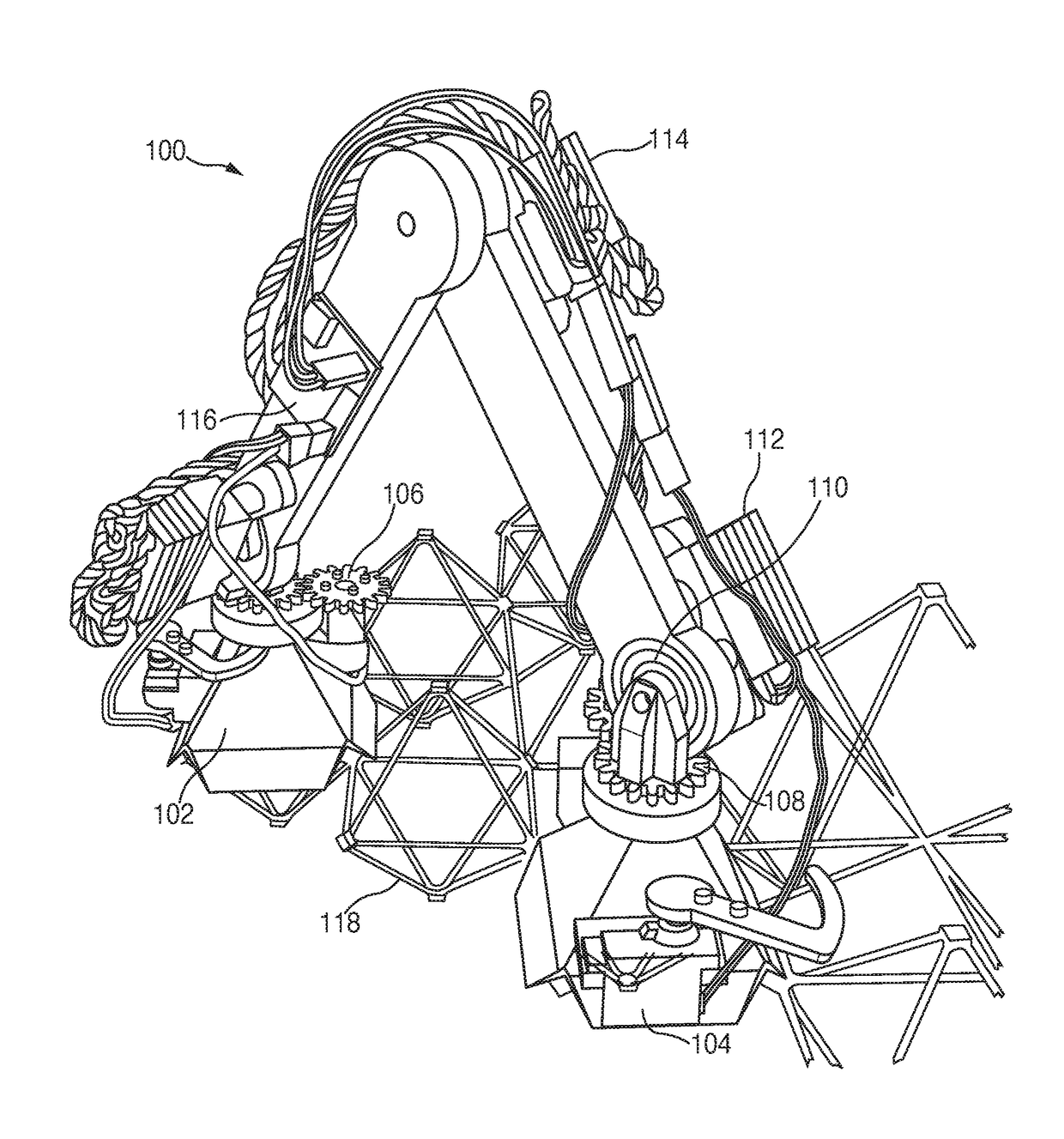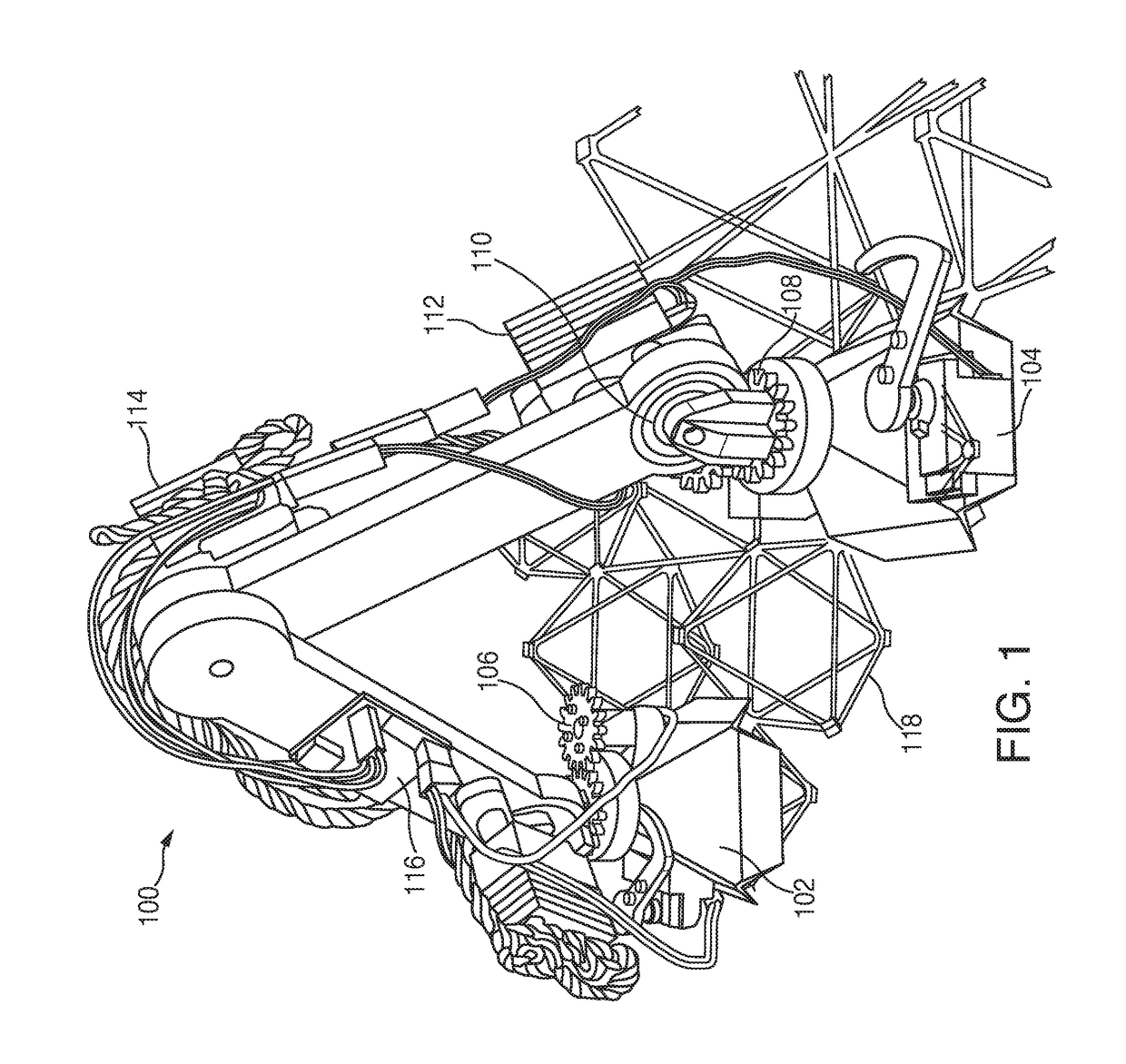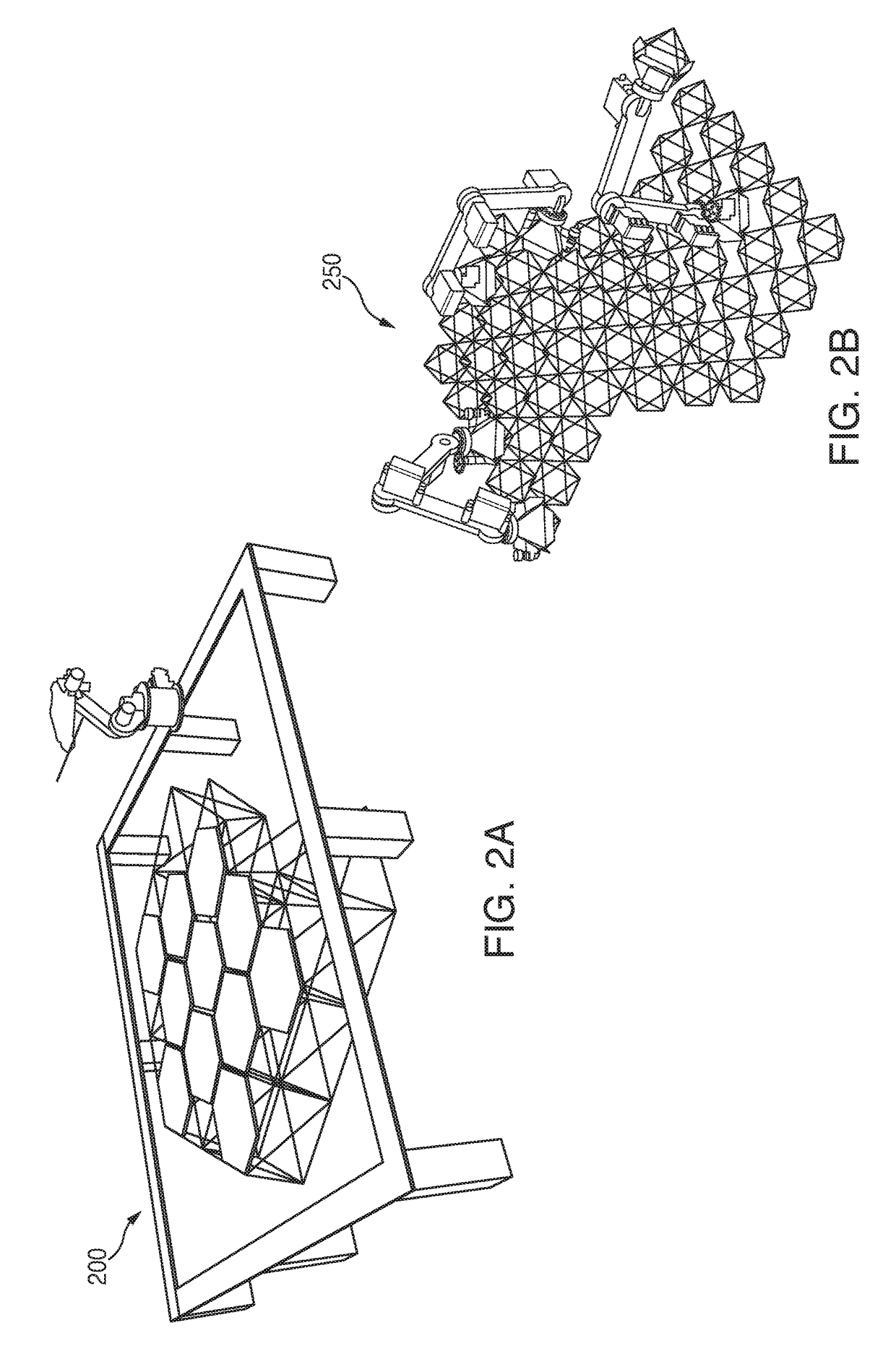Bipedal Isotropic Lattice Locomoting Explorer: Robotic Platform for Locomotion and Manipulation of Discrete Lattice Structures and Lightweight Space Structures
a robotic platform and isotropic technology, applied in the field of robotics, can solve the problems of limited scale difficult to achieve the effect of space application, and difficult to achieve the effect of achieving the effect of reducing the complexity of the object being buil
- Summary
- Abstract
- Description
- Claims
- Application Information
AI Technical Summary
Benefits of technology
Problems solved by technology
Method used
Image
Examples
Embodiment Construction
Methodology
[0056]FIG. 1 depicts an example Bipedal Isotropic Lattice Locomoting Explorer (BILL-E) 100 on a lattice structure 118 with its main components. Bill-E's main components are a foot 102, a foot servo motor with latch 104, a lower leg motor with gear 106, a lower leg with integral gear 108, a lower leg to upper leg bearing interface 110, an upper leg servo motor with rigid connection to lower leg 112, a hip motor and bearing interface 114, and a microcontroller 116.
[0057]FIGS. 2A-2B show a comparison of robotic assembly platforms for space structures. FIG. 2A depicts a gantry-based robotic arm assembly system 200, based on work from [W. R. Doggett, “Robotic Assembly of Truss Structures for Space Systems and Future Research Plans,” in IEEE Aerospace Conference Proceedings, 2002]. As shown in FIG. 2A, robots can be mounted to linear gantries to increase the available build area for a given robot. FIG. 2B depicts a relative robotic system 250 enabling the construction of arbitr...
PUM
 Login to View More
Login to View More Abstract
Description
Claims
Application Information
 Login to View More
Login to View More - R&D
- Intellectual Property
- Life Sciences
- Materials
- Tech Scout
- Unparalleled Data Quality
- Higher Quality Content
- 60% Fewer Hallucinations
Browse by: Latest US Patents, China's latest patents, Technical Efficacy Thesaurus, Application Domain, Technology Topic, Popular Technical Reports.
© 2025 PatSnap. All rights reserved.Legal|Privacy policy|Modern Slavery Act Transparency Statement|Sitemap|About US| Contact US: help@patsnap.com



